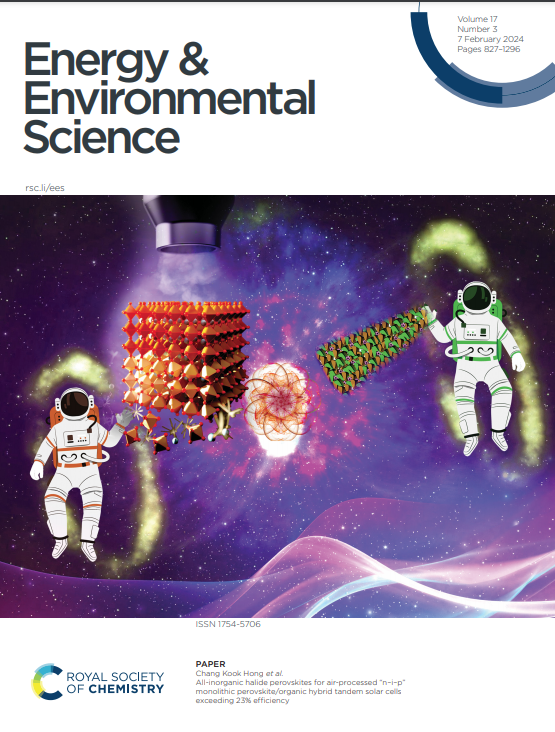An Ecosystem of Carbon Dioxide Removal Reviews - Part 1: Direct Air CO2 Capture and Storage.
IF 30.8
1区 材料科学
Q1 CHEMISTRY, MULTIDISCIPLINARY
引用次数: 0
Abstract
Direct air CO2 capture and storage (DACCS) is a technology in an emerging portfolio for carbon dioxide removal (CDR), understood to play a critical role in stabilising our climate by offsetting residual carbon emissions from hard-to-abate sectors and ensuring net-negative greenhouse gas emissions post reaching net-zero. Carbon dioxide removal is anticipated to gain further importance due to lacking progress on climate reduction efforts. Meanwhile, CDR, including DACCS, is transitioning from a merely scientific effort to implementation, requiring policy and decision making based on a comprehensive understanding of the scientific body of knowledge. This calls for a source of information synthesising the body of knowledge on CDR, which we set out to author and publish as a series of systematic review papers on CDR. This first review focuses on DACCS. Given the need for practical implementation, this review reports not only on DACCS technology and state of development, but also on the state-of-the-art in technoeconomic and environmental performance, policy, equity & justice, public perceptions, and monitoring, reporting, and verification, closing with the foreseen role for DACCS in future decarbonisation scenarios. The synthesis shows that direct air carbon capture and storage can only scale and overcome current challenges, such as its high cost, via targeted and long-term government support, including subsidies, similar to the support renewable energy received in past decades.二氧化碳去除的生态系统评论-第1部分:直接空气二氧化碳捕获和储存。
直接空气二氧化碳捕集与封存(DACCS)是一项新兴的二氧化碳去除(CDR)技术,通过抵消难以减少的行业的残余碳排放,并确保净零排放后的净负温室气体排放,在稳定气候方面发挥着关键作用。由于在减少气候变化的努力方面缺乏进展,预计二氧化碳的去除将变得更加重要。与此同时,包括DACCS在内的CDR正在从单纯的科学努力向实施转变,需要基于对科学知识体系的全面理解制定政策和决策。这就需要一个综合CDR知识体系的信息来源,我们着手撰写并发表了一系列关于CDR的系统综述论文。本文首先回顾了DACCS。鉴于实际实施的需要,本综述不仅报告了DACCS的技术和发展状况,还报告了技术经济和环境绩效、政策、公平和正义、公众观念以及监测、报告和核查方面的最新进展,最后介绍了DACCS在未来脱碳情景中的预期作用。综合表明,直接的空气碳捕获和储存只能通过有针对性的长期政府支持(包括补贴)来扩大规模并克服当前的挑战,例如其高成本,类似于过去几十年对可再生能源的支持。
本文章由计算机程序翻译,如有差异,请以英文原文为准。
求助全文
约1分钟内获得全文
求助全文
来源期刊

Energy & Environmental Science
化学-工程:化工
CiteScore
50.50
自引率
2.20%
发文量
349
审稿时长
2.2 months
期刊介绍:
Energy & Environmental Science, a peer-reviewed scientific journal, publishes original research and review articles covering interdisciplinary topics in the (bio)chemical and (bio)physical sciences, as well as chemical engineering disciplines. Published monthly by the Royal Society of Chemistry (RSC), a not-for-profit publisher, Energy & Environmental Science is recognized as a leading journal. It boasts an impressive impact factor of 8.500 as of 2009, ranking 8th among 140 journals in the category "Chemistry, Multidisciplinary," second among 71 journals in "Energy & Fuels," second among 128 journals in "Engineering, Chemical," and first among 181 scientific journals in "Environmental Sciences."
Energy & Environmental Science publishes various types of articles, including Research Papers (original scientific work), Review Articles, Perspectives, and Minireviews (feature review-type articles of broad interest), Communications (original scientific work of an urgent nature), Opinions (personal, often speculative viewpoints or hypotheses on current topics), and Analysis Articles (in-depth examination of energy-related issues).
 求助内容:
求助内容: 应助结果提醒方式:
应助结果提醒方式:


